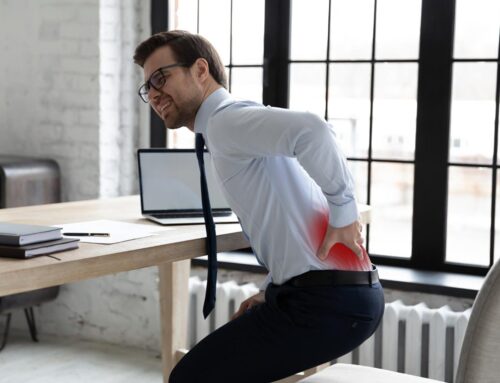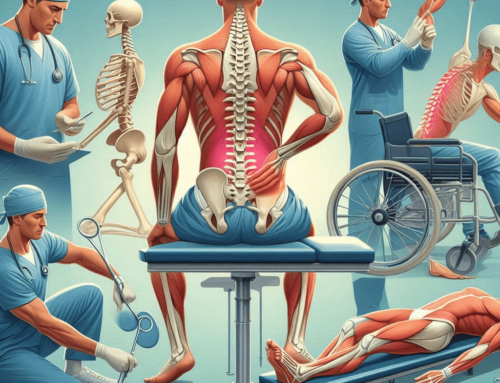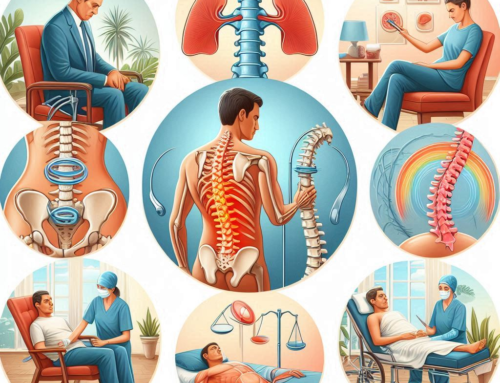Introduction:
A slipped disc, also known as a herniated disc or a ruptured disc, is a common condition that affects the spine. It occurs when the soft inner core of a disc in the spine bulges or leaks out through a tear in the outer layer. This can result in pain, discomfort, and other symptoms that can significantly impact an individual’s quality of life. In this article, we will delve deeper into the topic of slipped disc, exploring its causes, symptoms, and treatment options.
What is a Slipped Disc?
A slipped disc, or herniated disc, is a condition that occurs when the soft inner core of a disc in the spine bulges or leaks out through a tear in the outer layer. The discs in the spine act as cushions between the vertebrae, providing flexibility and shock absorption. When a disc slips or herniates, it can put pressure on nearby nerves, causing pain and other symptoms.
Causes of Slipped Disc
There are several factors that can contribute to the development of a slipped disc. Some common causes include:
- Age: As we age, the discs in our spine can become less flexible and more prone to tears, making them more susceptible to slipping.
- Injury: Trauma to the spine, such as a fall or a car accident, can cause a disc to slip out of place.
- Poor posture: Prolonged sitting or standing with poor posture can put extra pressure on the discs in the spine, increasing the risk of a slipped disc.
- Repetitive stress: Activities that involve repetitive movements, such as lifting heavy objects or twisting, can also increase the risk of a slipped disc over time.
Symptoms of Slipped Disc
The symptoms of a slipped disc can vary depending on the location and severity of the herniation. Common symptoms may include:
- Pain: Pain is the most common symptom of a slipped disc. It may be localized to the area of the herniation or radiate to other parts of the body, such as the buttocks, legs, or arms.
- Numbness or tingling: Pressure on nerves caused by a slipped disc can result in numbness or tingling sensations in the affected area.
- Weakness: Muscle weakness or difficulty moving certain body parts may occur if the nerves that control those muscles are affected by a slipped disc.
- Changes in reflexes: Reflexes may be diminished or absent in the affected area.
- Bowel or bladder changes: In rare cases, a slipped disc can put pressure on the nerves that control bowel or bladder function, resulting in changes in bowel or bladder habits.
Diagnosis of Slipped Disc
If a slipped disc is suspected, a healthcare provider will typically perform a physical examination and may order additional tests, such as:
- Imaging tests: X-rays, MRI (magnetic resonance imaging), or CT (computed tomography) scans may be ordered to visualize the spine and confirm the diagnosis of a slipped disc.
- Nerve tests: Electromyography (EMG) or nerve conduction studies may be done to assess the function of the nerves and determine if they are affected by the slipped disc.
- Clinical evaluation: A thorough assessment of the patient’s medical history, symptoms, and physical examination findings will be taken into consideration to arrive at a definitive diagnosis.
Treatment Options for Slipped Disc
Treatment for a slipped disc may vary depending on the severity of the herniation, the location of the slipped disc, and the overall health of the patient. Some common treatment options include:
- Conservative measures: Mild to moderate cases of slipped disc can often be managed with conservative measures. These may include:
- Pain medication: Over-the-counter pain medications such as acetaminophen or nonsteroidal anti-inflammatory drugs (NSAIDs) may be recommended to relieve pain and reduce inflammation.
- Physical therapy: Physical therapy exercises and techniques may be prescribed to help strengthen the muscles surrounding the spine, improve posture, and alleviate pain.
- Heat or ice therapy: Applying heat or ice to the affected area may help to reduce pain and inflammation.
- Rest and activity modification: Resting and avoiding activities that exacerbate the symptoms may be recommended, followed by a gradual return to normal activities with modifications.
- Lifestyle changes: Making lifestyle changes such as maintaining a healthy weight, avoiding smoking, and practicing good posture can help prevent further disc herniation.
Advanced Treatment Options for Slipped Disc
In more severe cases, or if conservative measures do not provide adequate relief, more advanced treatment options may be considered. These may include:
- Epidural steroid injections: Corticosteroid injections may be administered into the space around the spinal nerves to reduce inflammation and relieve pain.
- Chiropractic care: Chiropractic adjustments and spinal manipulations may help to relieve pain and improve spinal alignment.
- Surgical intervention: In cases where conservative treatments are not effective, or if there is significant nerve compression or loss of function, surgery may be recommended. Surgical options may include discectomy (removal of the herniated portion of the disc), laminectomy (removal of a portion of the vertebra to relieve pressure), or spinal fusion (joining two vertebrae together to stabilize the spine).
- Alternative therapies: Alternative therapies such as acupuncture, massage, or herbal supplements may be considered as complementary treatments to help manage pain and promote healing.
Prevention of Slipped Disc
While slipped disc may not always be preventable, there are steps that can be taken to reduce the risk of developing this condition. These may include:
- Practicing good posture: Maintaining proper posture while sitting, standing, and lifting can help reduce stress on the spine and discs.
- Regular exercise: Engaging in regular exercise, including activities that promote core strength and flexibility, can help keep the spine healthy and reduce the risk of disc herniation.
- Lifting with care: Using proper lifting techniques, such as bending at the knees and lifting with the legs rather than the back, can help prevent strain on the spine.
- Avoiding repetitive movements: Minimizing repetitive movements that strain the spine, such as heavy lifting or twisting, can help prevent disc herniation.
- Maintaining a healthy lifestyle: Eating a balanced diet, maintaining a healthy weight, and avoiding smoking can all contribute to overall spinal health.
Conclusion
In conclusion, a slipped disc, or herniated disc, is a common condition that can cause pain and discomfort in the spine. It can be caused by various factors such as age, injury, poor posture, and repetitive stress. Symptoms may include pain, numbness, weakness, and changes in reflexes or bowel/bladder habits. Diagnosis may involve physical examination and imaging tests. Treatment options range from conservative measures such as medication, physical therapy, and lifestyle changes to more advanced options like injections, chiropractic care, or surgery in severe cases. Preventive measures can also be taken to reduce the risk of developing a slipped disc. It is important to consult with a healthcare provider for proper evaluation, diagnosis, and management of slipped disc to optimize outcomes and improve quality of life.
Glossary
- Slipped disc: Also known as a herniated disc or ruptured disc, it occurs when the soft inner core of a disc in the spine bulges or leaks out through a tear in the outer layer, causing compression of nearby nerves or spinal cord.
- Nucleus pulposus: The soft inner core of a disc in the spine made up of a gel-like substance.
- Annulus fibrosus: The tough outer layer of a disc in the spine composed of concentric rings of fibrous tissue.
- Disc herniation: The condition when the nucleus pulposus protrudes through a tear in the annulus fibrosus, causing compression of nearby nerves or spinal cord.
- Radiculopathy: A condition characterized by pain, numbness, or weakness that radiates along the path of a nerve, often caused by nerve compression due to a herniated disc.
- MRI (Magnetic Resonance Imaging): A diagnostic imaging test that uses powerful magnets and radio waves to produce detailed images of the internal structures of the body, including the spine.
- CT (Computed Tomography) scan: A diagnostic imaging test that uses X-rays and computer technology to produce cross-sectional images of the body, including the spine.
- Conservative treatment: Non-surgical treatment options, such as medication, physical therapy, and lifestyle changes, used to manage slipped disc without surgical intervention.
- Discectomy: Surgical removal of the herniated portion of the disc.
- Laminectomy: Surgical removal of a portion of the vertebra to relieve pressure on nerves or spinal cord.
- Spinal fusion: Surgical procedure that involves joining two vertebrae together to stabilize the spine.
- Chiropractic care: A form of alternative therapy that focuses on the diagnosis and treatment of musculoskeletal disorders, including the spine, through adjustments and manipulations.





Get Social